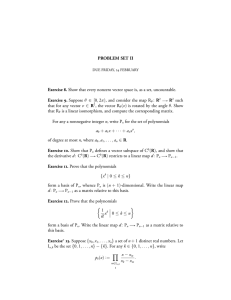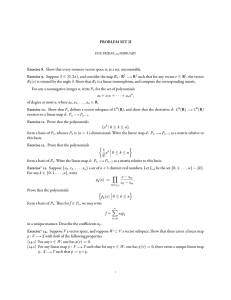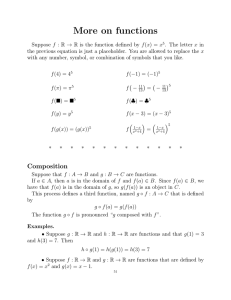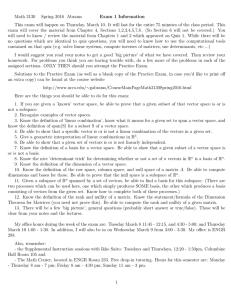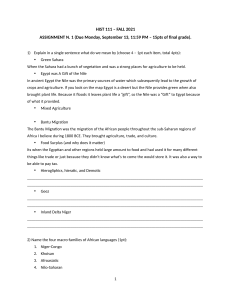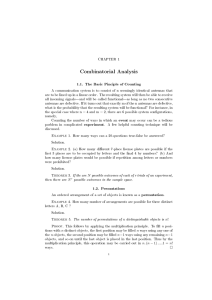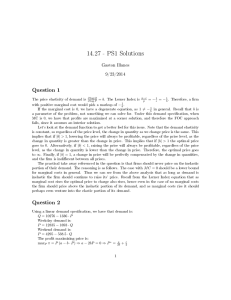223: QUESTIONS AND ANSWERS 1. Metamathmatics
advertisement
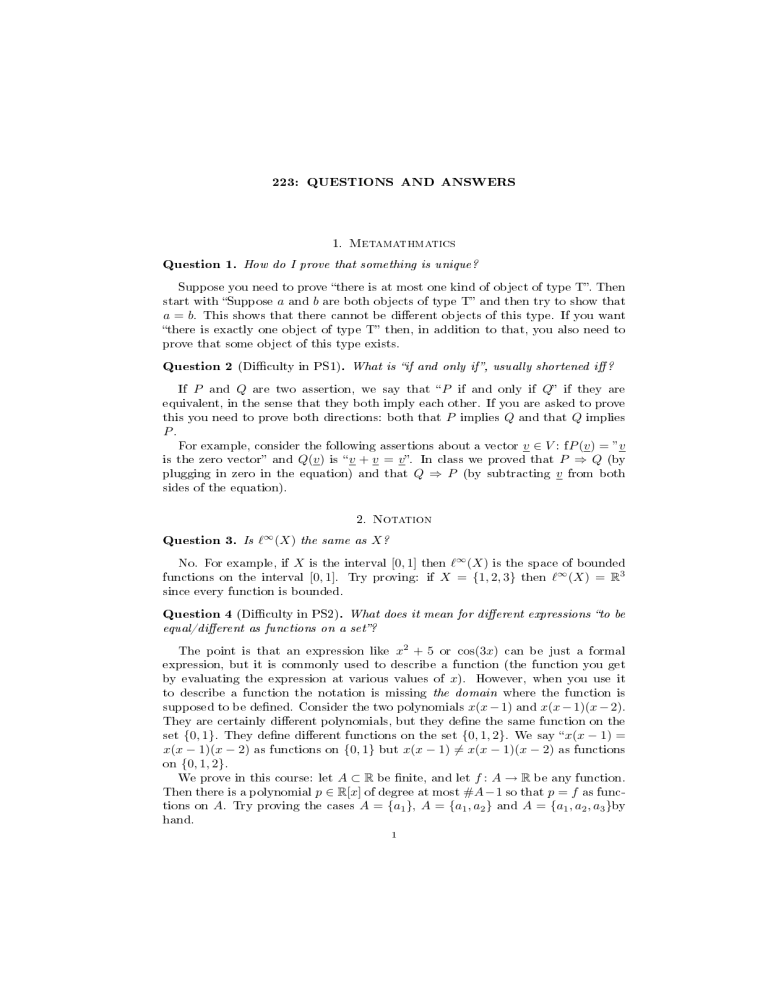
223: QUESTIONS AND ANSWERS
1.
Metamathmatics
Question 1. How do I prove that something is unique?
Suppose you need to prove there is at most one kind of object of type T. Then
start with Suppose
a = b.
a
and
b
are both objects of type T and then try to show that
This shows that there cannot be dierent objects of this type. If you want
there is exactly one object of type T then, in addition to that, you also need to
prove that some object of this type exists.
Question 2 (Diculty in PS1). What is if and only if , usually shortened i ?
If
P
and
Q
are two assertion, we say that P if and only if
Q
if they are
equivalent, in the sense that they both imply each other. If you are asked to prove
this you need to prove both directions: both that
P
implies
Q
and that
Q
implies
P.
v ∈ V : fP (v) = ”v
P ⇒ Q (by
subtracting v from both
For example, consider the following assertions about a vector
Q(v)
is the zero vector and
is v
+ v = v .
plugging in zero in the equation) and that
In class we proved that
Q ⇒ P
(by
sides of the equation).
2.
Question 3. Is
`∞ (X)
No. For example, if
the same as
X
functions on the interval
Notation
X?
is the interval
[0, 1].
[0, 1]
`∞ (X) is the space of bounded
X = {1, 2, 3} then `∞ (X) = R3
then
Try proving: if
since every function is bounded.
Question 4 (Diculty in PS2). What does it mean for dierent expressions to be
equal/dierent as functions on a set?
The point is that an expression like
x2 + 5
or
cos(3x)
can be just a formal
expression, but it is commonly used to describe a function (the function you get
by evaluating the expression at various values of
x).
However, when you use it
to describe a function the notation is missing the domain where the function is
supposed to be dened. Consider the two polynomials
x(x − 1) and x(x − 1)(x − 2).
They are certainly dierent polynomials, but they dene the same function on the
{0, 1}. They dene dierent functions on the set {0, 1, 2}. We say x(x − 1) =
x(x − 1)(x − 2) as functions on {0, 1} but x(x − 1) 6= x(x − 1)(x − 2) as functions
on {0, 1, 2}.
We prove in this course: let A ⊂ R be nite, and let f : A → R be any function.
Then there is a polynomial p ∈ R[x] of degree at most #A−1 so that p = f as functions on A. Try proving the cases A = {a1 }, A = {a1 , a2 } and A = {a1 , a2 , a3 }by
set
hand.
1
223: QUESTIONS AND ANSWERS
2
Linear algebra
3.
Question 5 (Diculty in PS1). What is the dierence between a subset and a
subspace?
Consider the vector space
R2 .
2
R means
any collection
of vectors
0
−7
3
x
,
,
and
|
x
∈
R
0
π
2
x2
A subset of
belonging to
R2 ,
for example
is a subset of
R2 .
A subspace is a subset ssatisfying extra conditions (it must be non-
empty, and closed under the vector space operations). For example,
is a subspace of
x
2x
|x∈R
R2 .
Question 6. Suppose
u, v
are linearly independent. Aren't
0u
and
0u + 0v
two
dierent ways of writing the zero vector as a combination?
No we don't distinguish representations involving multiplication by zero. So
both of the example representations are the same as the empty sum. Similarly,
and
2u + 0v
are considered the same representation of the vector
4.
Question 7. Let
z ∈ C.
2u
2u.
Complex numbers
Why do we write
2
z̄z = |z|
and not
z̄z = z 2
The rst statement is the denition of the absolute value: we set
?
|z| =
√
z̄z .
The
second claim is true, but would be an annoying way to dene the absolute value
(to compute
|w|
you'd need to nd
5.
Question 8. Let
linear functionals
V be
hu, ·i
Now specically for
for which
z 2 = w).
Inner product spaces
0
an inner product space, and let u, u
0
and hu , ·i agree. Why is it that u =
Under the assumption, we have
0.
z
0
x=u−u
∈V.
u0 ?
Suppose that the
hu, xi = hu0 , xi for all x ∈V, that is hu − u0 , xi =
it follows that
hu − u0 , u − u0 i = 0 ,
and by the denition of an inner product this shows that
zv ,
that is that
u = u0 .
u − u0 =
